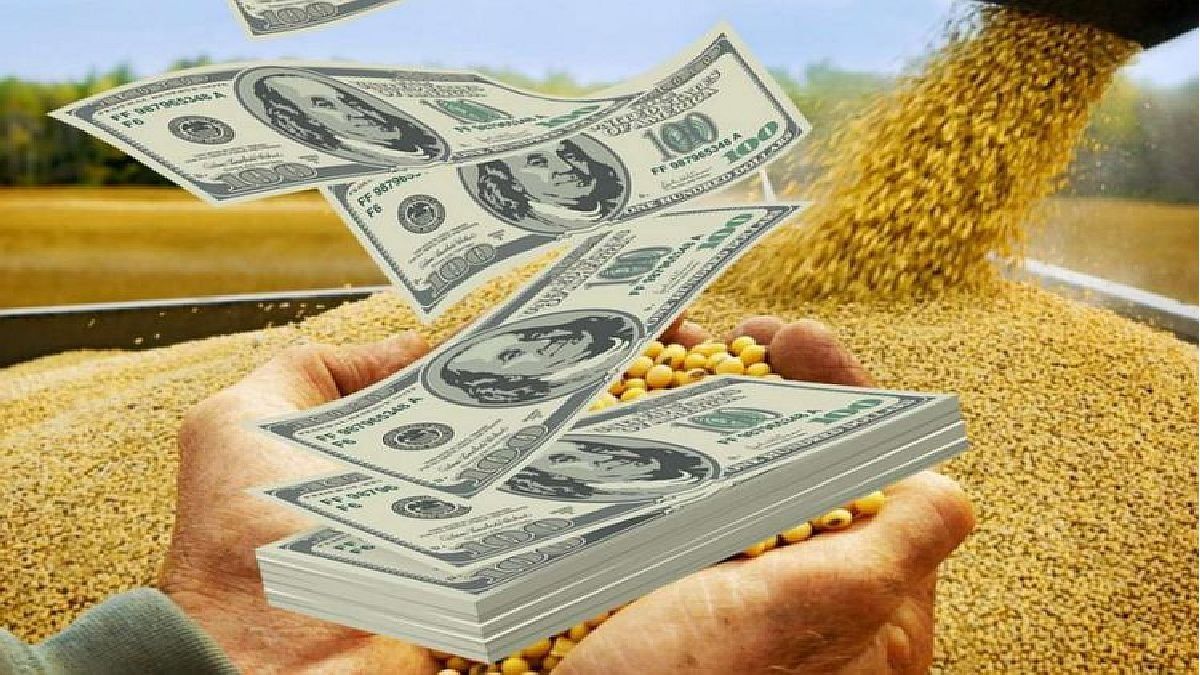The Government will implement three new exchange and tax measures, which will be made official this Monday through decrees in the Official Gazette and general resolutions of the AFIP, the Ministry of Agriculture and the Ministry of Commerce. They will point to the exchange simplification, by unifying the “card” dollar with the “savings” with the same value. In addition, a new agricultural dollar of $340 will be established for regional economies, which will include corn, but not soybeans. On the other hand, a tax will be applied to imports, which will be 7.5% for goods, and 25% for services, although there will be exceptions according to items.
According to official sources commented to Ámbito, the measures have already been communicated to the International Monetary Fund (IMF), within the framework of the negotiation for the agreement carried out by an Economy delegation in Washington. From the AFIP aim to improve collection by 0.8% of GDPthat is, $1.3 trillion annually, and from the Central Bank they expect to be able to accumulate some of the US$2,000 million waiting for them to settle Until August 31. Despite the import tax, which will include intermediate to final goods, in the Ministry of Economy do not expect price impact.
What does the government expect?
According to government sources, one of the main objectives of the measures is to strengthen collection and reserves, which had the impact of “the greatest drought in Argentine history in 100 years.” In terms of collection, the $1.3 billion extra that they hope to raise by the end of the year includes taxes on imports and withholdings for the agricultural dollar. But, in addition, from the AFIP they hope that the new advance of the Income Tax that they established for 193 companies can collect an extra $108,000 million.
As for the reserves, they hope that with the new agricultural dollar US$2,000 million are settled by August 31. When asked if reserves could be accumulated, official sources stated that due to the liquidation term and the daily sales rhythm of the Central Bank in recent days, a part could accumulate. On gap rate, they affirmed that “it should be reduced”.
Ámbito consulted if this type of measure seeks to avoid an exchange jump in the middle of the negotiation with the IMF. “These are necessary measures that are part of the negotiation, the IMF is already aware. They know that we prefer these measures that we can know the impact, to apply a devaluationwhich in a bi-monetary country could cause an overshoot in prices”, affirmed a senior source from the economic team.
Despite the fact that the new measures imply a higher exchange rate for foods such as corn, and the application of a generalized tax for imports, the government assures that they do not expect them to generate higher inflation. “There have already been increases in the prices of imported goods well above the devaluation process, at this time there were increases in profit margins, let’s hope that these taxes that are applied have no effect on price indices,” said a senior official source.
3 new measures
The government calls the first “exchange simplification”, since it equates the solidarity dollar exchange rate with the card of up to US$300 per month. This is, it will be the same dollar for whoever buys tickets as for whoever pays the credit card in dollars. Thus, 30% of the Country tax and 45% of the perception of Profits are unified. The Government assures that it impacts some 900,000 people who buy in homebanking for an average of US$150 per month. Consumption above US$300 will maintain the call “Qatar dollar”the most expensive on the market, because it also includes a third tax.
The second measure includes a new agricultural dollar for regional economies. Although this exchange rate currently applies, the difference is that it increases from $300 to $340, and this time it will include corn. Since the cereal has an impact on the food chain, as in the case of meat, they ensure that there will be a “quota” to ensure the domestic market. As they explained, this edition will not include soybeans “because of the economic, productive and international context.” The impact of the Central Bank issuance will be sterilized, and producers who sell in the official dollar to the domestic market will receive compensation, they officially explained.
The third will involve the application of the PAIS tax for imports, although they clarify that if they use their own dollars, it will not be applied. In the case of services, imports of services will have a rate of 25%. The following will be excepted: freight, which will already be applied the rate of 7.5%; Health and Education, exempt by Law 27,541; recitals, which already pays 30%. The official explanation is that “the import is not being taxed, but the access to the MULC when tickets are purchased.”
In the case of import of goods, the country tax will be applied at 7.5%. Excepted are: medicines, exempt by law; luxury, which already pay 30%; and fuels and goods related to power generation. On the other hand, from the Government they clarify that all inputs and intermediate goods that are included in the basic food basket are excepted. Nor will the tax be applied to temporary imports that are made for products that are produced locally and then exported, as in the case of agriculture with soybeans or auto parts in the automotive industry. The rest of the inputs and intermediate goods for production are included. The perception will be made directly by the banks.
The Secretary of Commerce will be in charge of discriminating the list of CUIT and tariff headings of everything that will be exempted from paying the import tax.
Source: Ambito




